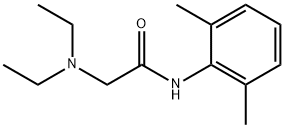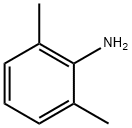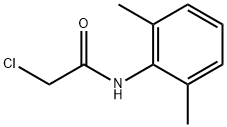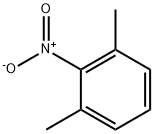
Lidocaine synthesis
- Product Name:Lidocaine
- CAS Number:137-58-6
- Molecular formula:C14H22N2O
- Molecular Weight:234.34

Yield:137-58-6 97.5%
Reaction Conditions:
with nickel trifluoromethanesulfonate in lithium hydroxide monohydrate at 100; for 6 h;Molecular sieve;Temperature;
Steps:
1-6 The preparation method of a kind of lidocaine of the present invention specifically adopts the following steps to prepare:
Adding the compound shown in formula I (7.2g, 40.2mmol), diethylamine (4.4g, 60.2mmol), Nickel trifluoromethanesulfonate (0.06g), Hβ molecular sieve (0.6g) and 30ml of water were stirred at 100°C for 6 hours to fully mix the reaction, and the reaction end point was determined by TLC. Precipitation was formed, and the crude product of lidocaine was obtained by filtration, and then the crude product was first washed with water, and then dried in a vacuum drying oven at 70° C. to obtain 9.2 g of lidocaine white powder with a purity of 99.82% and a yield of 97.5% (its yield was 9.2 g). rate refer to the calculation formula in Example 1).
References:
CN114524744,2022,A Location in patent:Paragraph 0027-0058

109-89-7
489 suppliers
$10.00/5g

79-04-9
382 suppliers
$12.00/5g

87-62-7
461 suppliers
$10.00/5G

137-58-6
552 suppliers
$14.00/5g




